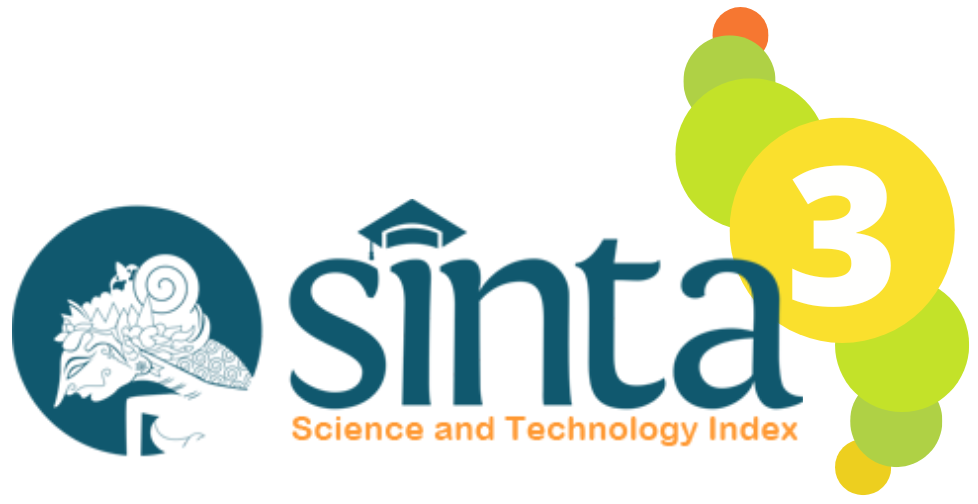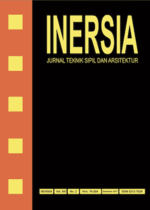KONTROL DEBIT BANJIR BENDUNG DI KALI KUNING
DOI:
https://doi.org/10.21831/inersia.v10i2.9964Abstract
ABSTRACT
This study aims to determine design–flood discharge that occur in existing dam at Kali Kuning river
and calculate flood discharge at 4 control points Chek Dam Kuning, Yapah, Ngadirojo and
Dadapan Weir. The background of this study is flood disaster at Kalikuning river.The study iscarried
out by hydrology and hydraulic analysis. The analysis of hydrology which included: testing of
consistency data of rain fall, analysis of area averaged rain fall, design rain fall and testing of
goodness of fit by using Smirnov-Kolmogorof test and chi square test. The analysis of hydraulic
iscarried out by calculation the height ofthe design flood at each control pointusing Bundchu
formulation. The study results show that for 5th rain fall recorder, namely Kaliurang, Pakem,
Sorasan, Sopalan and Tanjungtirto using the Rational Method, Weduwen, and Hasperare obtained
the flood discharge for 100 year return period as follows (1) Chek dam Kuning 129.253 m3/sec, (2)
Yapah weir 226.697 m3/sec (3) Ngadirojo weir 262.062 m3/sec, (4) Dadapan weir 287.046 m3/sec.
By using Bundchu formulation are obtained the overflow depth as follows: (1) 1.254 m, (2) 2,526
m, (3) 2,163 m, (4) 3.157 m. The result explained that in Ngadirojo weir and Dadapan weirnotable
to accommodate High Run off design flood of Kali Kuning river, while in the others control points
are relatively safe.
Keywords: Flood discharge, high runoff, Kali Kuning river,
Downloads
How to Cite
Lutjito, S. (2016). KONTROL DEBIT BANJIR BENDUNG DI KALI KUNING. INERSIA Lnformasi Dan Ekspose Hasil Riset Teknik Sipil Dan Arsitektur, 10(2). https://doi.org/10.21831/inersia.v10i2.9964
Issue
Section
Articles
License
Authors who publish with INERSIA journal agree to the following terms:
- Authors retain copyright and grant the INERSIA journal right of first publication with the work simultaneously licensed under Creative Commons Attribution License (CC BY 4.0) that allows others to share the work with an acknowledgment of the work's authorship and initial publication in this journal.
- Authors can enter into separate, additional contractual arrangements for the non-exclusive distribution of the published version of the work (e.g., post it to an institutional repository or edit it in a book), with an acknowledgment of its initial publication in this journal.
- Authors are permitted and encouraged to post their work online (e.g., in institutional repositories or on their website) before and during the submission process, as it can lead to productive exchanges, as well as earlier and greater citation of published work.

INERSIA by https://journal.uny.ac.id/index.php/inersia was distributed under a Creative Commons Attribution 4.0 International License










